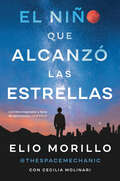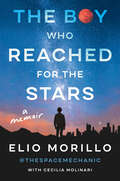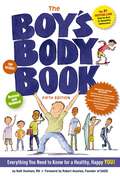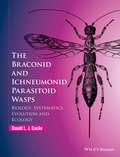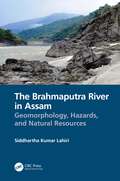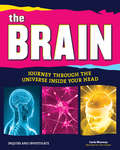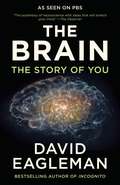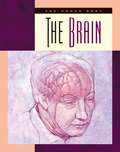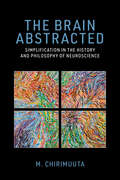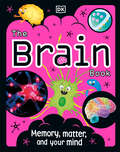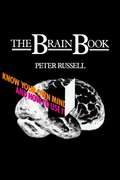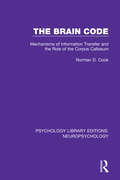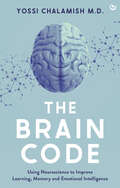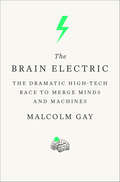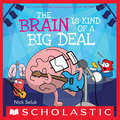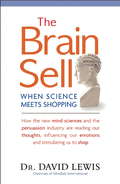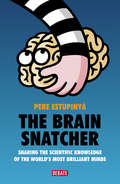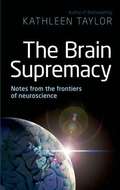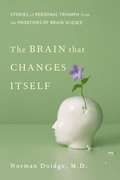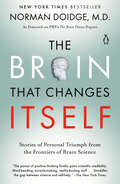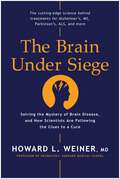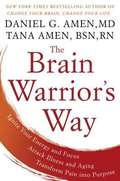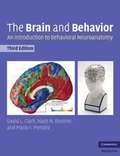- Table View
- List View
The Boy Who Reached for the Stars \ El niño que alcanzó las estrellas
by Elio MorilloEl joven ingeniero conocido como “el mecánico del espacio” (@THESPACEMECHANIC) comparte su apasionante historia, desde su infancia en Ecuador hasta su trabajo en la misión Marte 2020 de la NASA.Elio Morillo tenía cuatro años cuando una serie de dificultades económicas y familiares obligaron a su madre a abandonar Ecuador con él. En Nueva York, y más tarde en Puerto Rico, gracias a los sacrificios y el apoyo incondicional de su mamá, Elio descubrió el poder transformador de la educación y el esfuerzo, así como de la amistad y la ayuda desinteresada de los desconocidos. Su determinación lo llevó a trabajar en el Laboratorio de Propulsión a Chorro de la NASA para la Misión Marte 2020, donde fue ingeniero de pruebas y operaciones de sistema para el rover Perseverance e Ingenuity, el helicóptero de Marte. El niño que alcanzó las estrellas es una muestra de que, si te lo propones, tú también puedes realizar tus sueños, así sean tan grandes como alcanzar las estrellas.---The young engineer known as "the space mechanic" (@THESPACEMECHANIC) shares his gripping story, from his childhood in Ecuador to his work on NASA's Mars 2020 mission.Elio Morillo was four years old when a series of economic and family difficulties forced his mother to leave Ecuador with him. In New York, and later in Puerto Rico, thanks to the sacrifices and unconditional support of his mother, Elio discovered the transformative power of education and effort, as well as friendship and the selfless help of strangers. His determination led him to work at NASA's Jet Propulsion Laboratory for the Mars 2020 Mission, where he was a system tested and operations engineer for the Perseverance rover and Ingenuity, the Mars helicopter. The boy who reached for the stars is a proof that, if you set your mind to it, you too can make your dreams come true, even if they are as big as reaching for the stars.
The Boy Who Reached for the Stars: A Memoir
by Elio Morillo"Heartwarming... infectious ... [Morillo's The Boy Who Reached for the Stars] is every bit the inspiration he means it to be." –Kirkus ReviewsThe engineer known as the “space mechanic” speaks to both our future and past in this breathless memoir of his journey from Ecuador to NASA and beyond.Elio Morillo’s life is abruptly spun out of orbit when economic collapse and personal circumstances compel his mother to flee Ecuador for the United States in search of a better future for her son. His itinerant childhood sets into motion a migration that will ultimately carry Elio to the farthest expanse of human endeavor: space.Overcoming a history of systemic adversity and inequality in public education, Elio forged ahead on a journey as indebted to his galactic dreams as to a loving mother whose sacrifices safeguarded the ground beneath his feet. Today, Elio is helping drive human expansion into the solar system and promote the future of human innovation—from AI and robotics to space infrastructure and equitable access.The Boy Who Reached the Stars is both a cosmic and intimate memoir spun from a constellation of memories, reflections, and intrepid curiosity, as thoroughly luminous as the stars above.
The Boy's Body Book: Everything You Need to Know for a Healthy, Happy YOU! (Boys & Girls Body Books)
by Kelli DunhamThe #1 bestselling Boy's Body Book includes everything you need to know about growing up, even the embarrassing stuff. The newly updated fifth edition provides advice for parents and addresses questions a pre-teen boy may have while maturing through puberty and becoming a man.Everything is changing! How will you survive this trying time in your life? This book made just for boys contains all of the guy stuff you need to know about growing up, from your voice changing to peer pressure. The newly updated fifth edition of The Boy's Body Book helps prepare young boys and their parents for the ups and downs of puberty, middle school, and everything in between. This guide for pre-teen boys addresses issues like changing bodies, personal hygiene, self-confidence, leadership, school safety and personal boundaries. This updated fifth edition book for boys is expanded to include topics like:School safety and consentEmotional health, mindfulness, and self esteemCyberbullying and internet safetyLearning disabilitiesPersonal boundaries, communication, and consentStress managementBuilding healthy friendshipsand moreThe Boy's Body Book helps prepare boys for puberty and beyond by giving them age appropriate information, tools, tips, and tricks to take care of themselves and grow up in a healthy environment.Kelli Dunham, RN, BSN is a nurse, a comedian, and author of three other books: How to Survive and Maybe Even Love Nursing School, How to Survive and Maybe Even Love Your Life as a Nurse, and The Girl's Body Book: Everything You Need to Know for Growing Up You.
The Braconid and Ichneumonid Parasitoid Wasps
by Donald L. QuickeThe Ichneumonoidea is a vast and important superfamily of parasitic wasps, with some 60,000 described species and estimated numbers far higher, especially for small-bodied tropical taxa. The superfamily comprises two cosmopolitan families - Braconidae and Ichneumonidae - that have largely attracted separate groups of researchers, and this, to a considerable extent, has meant that understanding of their adaptive features has often been considered in isolation. This book considers both families, highlighting similarities and differences in their adaptations.The classification of the whole of the Ichneumonoidea, along with most other insect orders, has been plagued by typology whereby undue importance has been attributed to particular characters in defining groups. Typology is a common disease of traditional taxonomy such that, until recently, quite a lot of taxa have been associated with the wrong higher clades. The sheer size of the group, and until the last 30 or so years, lack of accessible identification materials, has been a further impediment to research on all but a handful of 'lab rat' species usually cultured initially because of their potential in biological control.New evidence, largely in the form of molecular data, have shown that many morphological, behavioural, physiological and anatomical characters associated with basic life history features, specifically whether wasps are ecto- or endoparasitic, or idiobiont or koinobiont, can be grossly misleading in terms of the phylogeny they suggest. This book shows how, with better supported phylogenetic hypotheses entomologists can understand far more about the ways natural selection is acting upon them.This book covers the same areas as Parasitic Wasps (Springer, 1997) (behaviour, physiology, development, anatomy, venoms, sex, ecology and evolution), but they have been brought up to date in this book (much new data has become available over the intervening years). This new book also focuses on this superfamily with which the author has great familiarity and provides a detailed coverage of each subfamily, emphasising anatomy, taxonomy and systematics, biology, as well as pointing out the importance and research potential of each group.Fossil taxa are included and it also has sections on biogeography, global species richness, culturing and rearing and preparing specimens for taxonomic study. The book highlights areas where research might be particularly rewarding and suggests systems/groups that need investigation. The author provides a large compendium of references to original research on each group. This book is an essential workmate for all postgraduates and researchers working on ichneumonoid or other parasitic wasps worldwide. It will stand as a reference book for a good number of years, and while rapid advances in various fields such as genomics and host physiological interactions will lead to new information, as an overall synthesis of the current state it will stay relevant for a long time.Brief TOC: Chapter 1 Introduction; Chapter 2 Adult external morphology; Chapter 3 The ovipoistor and ovipositor sheaths; Chapter 4 Internal and reproductive anatomy; Chapter 5 Immature stages; Chapter 6 Idiobionts, koinobionts and other life history traits; Chapter 7 Sex, courtship and mating; Chapter 8 Host location, assessment and associative learning; Chapter 9 Overcoming host immune reaction and physiological interactions with hosts; Chapter 10 Convergent adaptations; Chapter 11 Overview of Ichneumonoidea: relationships and systematics; Chapter 12 Phylogeny and systematics of the Braconidae; Chapter 13 Phylogeny and systematics of the Ichneumonidae; Chapter 14 Ecology; Chapter 15 Local and global patterns in diversity; Chapter 16 Collecting and rearing Ichneumonoidea; Chapter 17 Epilogue.
The Brahmaputra River in Assam: Geomorphology, Hazards, and Natural Resources
by Siddhartha Kumar LahiriThis holistic book covers the richest area in North East India in terms of both explored and foreseen reserves of fossil fuels and other natural resources. Using a multidisciplinary approach, GIS, and geospatial data gathered from different case studies included, this book helps readers develop a thorough understanding of a highly dynamic big river, the Brahmaputra, and use it as a comprehensive resource for further understanding the science of rivers. It discusses the causal factors of decadal-scale fluvial dynamics, the nature of fluvial dynamics, lateral variability of the older flood plains and neotectonics in the shallow subsurface, and the overall trend of basin evolution at different depths.
The Brain
by Carla MooneyWhy do we do and say the things we do and say?The Brain: Journey Through the Universe Inside Your Head introduces students to the fascinating world of the human brain and its effect on behavior. Readers learn about the main anatomy and functions of the brain while discovering the brain’s role in learning, memory, communication, and emotions. Kids also read about new technologies being used to research the brain in its various states of performance while being introduced to the effects of sleep, alcohol, and exercise on our most complex organ. Combining hands-on activities with neuroscience, anatomy, and psychology, The Brain includes projects such as building a 3-D brain model and testing how the brain adapts to a new situation. The Brain integrates a digital learning component by providing links to primary sources, videos, and other relevant websites. Additional materials include a glossary, timeline, and a list of current reference works. The Brain is a unique opportunity to connect behavior, physiology, and the outside world in one amazing place--your head! This title meets Common Core State Standards for literacy in science and technology; Guided Reading Levels and Lexile measurements indicate grade level and text complexity.
The Brain
by David EaglemanLocked in the silence and darkness of your skull, your brain fashions the rich narratives of your reality and your identity. Join renowned neuroscientist David Eagleman for a journey into the questions at the mysterious heart of our existence. What is reality? Who are "you"? How do you make decisions? Why does your brain need other people? How is technology poised to change what it means to be human? In the course of his investigations, Eagleman guides us through the world of extreme sports, criminal justice, facial expressions, genocide, brain surgery, gut feelings, robotics, and the search for immortality. Strap in for a whistle-stop tour into the inner cosmos. In the infinitely dense tangle of billions of brain cells and their trillions of connections, something emerges that you might not have expected to see in there: you. This is the story of how your life shapes your brain, and how your brain shapes your life. (A companion to the six-part PBS series. Color illustrations throughout.)From the Hardcover edition.
The Brain
by Jeanette LeardiThe human brain weighs less than four pounds, is made up of more than 100 billion cells, and is the control center of every human being. It keeps humans alive, allows them to experience emotions, and enables them to think and learn. How does this small organ manage to do so much? What should humans do to protect it? Read these informational texts to find out.
The Brain
by Susan H. GrayThe brain serves as the core of the human nervous system and the control center of the body. Engaging text provides a detailed overview of what parts comprise this remarkably complex organ, as well as how all of these components work together. Readers also learn about common disorders that affect the brain and how scientists are on the verge of making new and exciting discoveries that could potentially cure these problems.
The Brain Abstracted: Simplification in the History and Philosophy of Neuroscience
by M. ChirimuutaAn exciting, new framework for interpreting the philosophical significance of neuroscience.All science needs to simplify, but when the object of research is something as complicated as the brain, this challenge can stretch the limits of scientific possibility. In fact, in The Brain Abstracted, an avowedly &“opinionated&” history of neuroscience, M. Chirimuuta argues that, due to the brain&’s complexity, neuroscientific theories have only captured partial truths—and &“neurophilosophy&” is unlikely to be achieved. Looking at the theory and practice of neuroscience, both past and present, Chirimuuta shows how the science has been shaped by the problem of brain complexity and the need, in science, to make things as simple as possible. From this history, Chirimuuta draws lessons for debates in philosophy of science over the limits and definition of science and in philosophy of mind over explanations of consciousness and the mind-body problem.The Brain Abstracted is the product of a historical rupture that has become visible in the twenty-first century, between the &“classical&” scientific approach, which seeks simple, intelligible principles underlying the manifest complexity of nature, and a data-driven engineering approach, which dispenses with the search for elegant, explanatory laws and models. In the space created by this rupture, Chirimuuta finds grounds for theoretical and practical humility. Her aim in The Brain Abstracted is not to reform neuroscience, or offer advice to neuroscientists, but rather to interpret their work—and to suggest a new framework for interpreting the philosophical significance of neuroscience.
The Brain Book (The Science Book Series)
by Liam DrewA fun, fact-packed introduction to the brain and nervous system for young science enthusiastsThe brain - a wrinkly, spongy mass the size of a cauliflower that sits in our heads and controls everything we do! Discover what it&’s made of, how it works, and why we even need one in this fun, fact-packed introduction to the brain. Inside the pages of this STEM book for kids, budding young scientists will discover: • An age-appropriate introduction to the brain, what it is, what it does, how it works, and how it evolved • All about how scientists study the brain and nervous system • Introduces concepts like how we think, what consciousness is, and how the brains of other animals are different • Encourages young readers to develop an interest in STEAM fields - including biology, medicine, and science • Each page is filled with engaging photographs and artworks with easy to understand text Help them grow their brain while learning about it Filled with colorful illustrations and bite-sized chunks of information, this book covers all your questions on everything from the anatomy of the brain and nervous system, to how information is collected and sent around the body. It also explores questions about the brain that we don&’t know the answers to yet! This educational book for kids introduces complex topics in an age-appropriate way, from how our brains learn, and how processes like making memories, thinking, emotions, and sleep happen in the brain. Kids will also learn about the weird and wonderful world of different animal brains and how they impact their behavior. With entertaining illustrated characters, clear diagrams, and fascinating photographs, children will love learning about their minds and this all-important organ. Keep little ones learning with more in the seriesThe Brain Book is an ideal introduction to the brain and nervous system. Other titles in this educational book series include The Bacteria Book and The DNA Book - an excellent introduction to science for young readers and a great addition to any STEAM library.
The Brain Book: Know Your Own Mind and How to Use it
by Peter RussellFirst published in 1980. Routledge is an imprint of Taylor & Francis, an informa company.
The Brain Code: Mechanisms of Information Transfer and the Role of the Corpus Callosum (Psychology Library Editions: Neuropsychology #2)
by Norman D. CookOriginally published in 1986, this stimulating and unorthodox book integrates the major findings of hemispheric research with the larger questions of how the brain stores and transmits information – the ‘brain code’. Norman Cook emphasizes how the two cerebral hemispheres communicate information over the corpus callosum, the largest single nerve tract of the human brain. Excitatory mechanisms are involved in the duplication of information between the hemispheres; in contrast, inhibitory mechanisms are implicated in the production of hemispheric asymmetries and, crucially, in high-level cognitive phenomena such as the right hemisphere’s role in providing the ‘context’ within which left hemispheric verbal information is placed. These callosal mechanisms of information transfer are not only fundamental to the brain code; they are the simplest and most easily demonstrated ways in which the neocortex ‘talks to itself’. The Brain Code demonstrates how popular topics within psychology at the time, such as laterality, hemisphere differences and the psychology of left and right, are central to further progress in understanding the human brain. This book provides stimulating reading for students of psychology, artificial intelligence and neurophysiology, as well as anyone interested in the broader question of how the brain works.
The Brain Code: Using neuroscience to improve learning, memory and emotional intelligence
by Yossi ChalamishThis practical and accessible book empowers readers to access their brain&’s full potential, featuring cutting-edge neuroscience research presented for the first time.This book introduces the new and fascinating field of Clinical Neuroscience, which argues that the brain has the power to prevent and treat a variety of neurobiological disorders, from autism to attention deficit disorder. With ground-breaking neuroscience research presented in an accessible, easy-to-understand way The Brain Code teaches readers how to get the most from their brains, how to access their peak cognitive function. Each chapter will look at different functions of the brain:how can we regulate and control our emotions and thereby promote optimal thinking and behaviourimproving creative thinking through some simple tried-and-tested tricks efficient ways to use memory and thinking to improve our learning ability – a mandatory chapter for every student!steps to take to promote peaceful sleep recent brain research describing natural ways to deal with fears and anxietieslook behind the scenes at a mind in love and understand how the knowledge can be harnessed to manage more successful relationshipsDr Yossi Chalamish uses his expertise in neuroscience to provide contemporary research on how each brain function works, featuring case studies from his clinical experience that illustrate its function, and practical exercises and tools to improve your cognitive abilities in your everyday life.
The Brain Electric: The Dramatic High-Tech Race to Merge Minds and Machines
by Malcolm GayThe gripping and revelatory story of the dramatic race to merge the human brain with machinesLeading neuroscience researchers are racing to unlock the secrets of the mind. On the cusp of decoding brain signals that govern motor skills, they are developing miraculous technologies to enable paraplegics and wounded soldiers to move prosthetic limbs, and the rest of us to manipulate computers and other objects through thought alone. These fiercely competitive scientists are vying for Defense Department and venture capital funding, prestige, and great wealth. Part life-altering cure, part science fiction, part military dream, these cutting-edge brain-computer interfaces promise to improve lives—but also hold the potential to augment soldiers' combat capabilities. In The Brain Electric, Malcolm Gay follows the dramatic emergence of these technologies, taking us behind the scenes into the operating rooms, start-ups, and research labs where the future is unfolding. With access to many of the field's top scientists, Gay illuminates this extraordinary race—where science, medicine, profit, and war converge—for the first time. But this isn't just a story about technology. At the heart of this research is a group of brave, vulnerable patient-volunteers whose lives are given new meaning through participating in these experiments. The Brain Electric asks us to rethink our relationship to technology, our bodies, even consciousness itself—challenging our assumptions about what it means to be human.
The Brain Is Kind of a Big Deal
by Nick SelukOh hey, guess what? New York Times bestseller Nick Seluk has a hilarious new nonfiction picture book all about your body's very own computer -- the brain!Have you ever thought about everything your brain does for you? It is always working to keep you alive and safe. (Plus it lets you think about funny stuff, too.) So why is the brain such a big deal? Because it makes you YOU, of course!This funny and factual picture book from Heart and Brain creator Nick Seluk explains the science behind everything the brain helps you do: keeping your heart beating, telling you when you are sleepy, remembering stuff, and more. The brain is in charge of everything you do, every minute of every day for your entire life. That's kind of a big deal.Each spread features bite-sized text and comic-style art with sidebars sprinkled throughout. Anthropomorphized organs and body parts -- recognizable from Nick Seluk's New York Times bestselling book -- help readers learn through funny jokes and comic panels. Funny, smart, and accessible, The Brain Is Kind of a Big Deal is a must-have!
The Brain Sell
by David LewisIn a room sat a theoretical physicist, an engineer, a mathematician, a biochemist, and a neuropsychologist. Their task? To evaluate the effectiveness of a marketing campaign for a grooming product that retails for less than $15.00.The Brain Sell, praised as the new Hidden Persuaders, is the inside story of how our rapidly evolving understanding of the brain plays into the advertising, marketing, and retailing industry. With the emergence of Big Data mining, the "persuasion industry" is more prominent than ever. David Lewis, PhD, internationally renowned researcher, brings science to shopping-mapping the brain and the body to explore the sensitivities in our minds and discover how we select and buy. Gone are the days of traditional salesmanship-in the United Kingdom and United States alone, $313 billion is spent annually on subliminal messaging and measuring consumers' subconscious reactions to the color of a child's toy, the smell of a store's interior, or the font of the smallest letter on a soup can. Lewis repeatedly surprises with secrets from the advertising and marketing industries, revealing the scientific strategies used to evaluate and manipulate consumer response. An enlightening read for marketers and advertisers and an urgently important one for anyone who considers themselves a "smart shopper." The Brain Sell shows that even after the product is on the shelf and the commercial is over, the sales pitch goes on.David Lewis, PhD, a neuropsychologist, is founder and director at the independent research consultancy Mindlab International based at the University of Sussex. Additionally, he is a psychologist, an international lecturer, and acclaimed author, most recently of Impulse (Harvard University Press). Dubbed the "father of neuromarketing" for his pioneering studies of analyzing brain activity for research and commercial purposes, he currently specializes in noninvasive techniques for measuring human responses under real life conditions.
The Brain Snatcher: Sharing the scientific knowledge of the world's most brilliant minds
by Pere EstupinyàA eureka-inspiring book that will change your view of the world as you know it. In this compilation of the biggest scientific discoveries of the last decades, Pere Estupinyà clearly and thoughtfully explains to his readers the most innovative ideas sprouting from the world's top scientists' brains... How does the brain act when we are hung-over? Can we trick our body into falling in love? What's the world going to be like in thirty years? All of this, and much more, is explained in this indispensable book for science lovers and the curious-minded. In The Brain Snatcher, the author accesses the world's most prestigious laboratories in order to steal the knowledge of this century's heroes -scientists- and share it with his readers. Through entertaining stories, the reader gets acquainted with the hottest debates in neuroscience, cosmology, genetics, human psychology, sociology of science, and climate change.Moreover, the brain snatcher follows the flu virus through the body; steps into a brain scanner to check if it's capable of detecting his own lies; delves into the frictions between religion and creationism; asks his own hormones why he falls in love; surrenders to the Chaos theory, and sees how disastrous the brain is when it comes to making a thorough decision. He also gets to understand why his pupils dilate when he is having an orgasm; finds the origins of superstitions, analyzes why magazines like Science or Nature make more mistakes than other so-called minor magazines, discovers the reasons that can lead an endearing scientist to keep on investigating until he is 96, and goes crazy trying to figure out what things like antimatter or quantum entanglement are. A buffet of knowledge for those without a science degree, but who are curious about the whys, whats and hows of science!
The Brain Supremacy: Notes from the Frontiers of Neuroscience
by Kathleen TaylorThe human mind and brain are now among the hottest subjects in scientific research. Breakthrough techniques mean we are on the verge of being able to read minds, to control actions direct from the brain, to change or enhance the way our thinking works. Kathleen Taylor explores the astonishing possibilities and the ethical implications.
The Brain That Changes Itself: Stories of Personal Triumph from the Frontiers of Brain Science
by Norman DoidgeAn astonishing new science called neuroplasticity is overthrowing the centuries-old notion that the human brain is immutable, by psychiatrist and psychoanalyst, Norman Doidge, M.D., traveled the country to meet both the brilliant scientists championing neuroplasticity and the people whose lives they've transformed-people whose mental limitations or brain damage were seen as unalterable. We see a woman born with half a brain that rewired itself to work as a whole, blind people who learn to see, learning disorders cured, IQs raised, aging brains rejuvenated, stroke patients learning to speak, children with cerebral palsy learning to move with more grace, depression and anxiety disorders successfully treated, and lifelong character traits changed. Using these marvelous stories to probe mysteries of the body, emotion, love, sex, culture, and education, Dr. Doidge has written an immensely moving, inspiring book that will permanently alter the way we look at our brains, human nature, and human potential.
The Brain That Changes Itself: Stories of Personal Triumph from the Frontiers of Brain Science
by Norman DoidgeWhat is neuroplasticity? Is it possible to change your brain? Norman Doidge’s inspiring guide to the new brain science explains all of this and more. An astonishing new science called neuroplasticity is overthrowing the centuries-old notion that the human brain is immutable, and proving that it is, in fact, possible to change your brain. Psychoanalyst, Norman Doidge, M.D., traveled the country to meet both the brilliant scientists championing neuroplasticity, its healing powers, and the people whose lives they’ve transformed—people whose mental limitations, brain damage or brain trauma were seen as unalterable. We see a woman born with half a brain that rewired itself to work as a whole, blind people who learn to see, learning disorders cured, IQs raised, aging brains rejuvenated, stroke patients learning to speak, children with cerebral palsy learning to move with more grace, depression and anxiety disorders successfully treated, and lifelong character traits changed. Using these marvelous stories to probe mysteries of the body, emotion, love, sex, culture, and education, Dr. Doidge has written an immensely moving, inspiring book that will permanently alter the way we look at our brains, human nature, and human potential.
The Brain Under Siege: Solving the Mystery of Brain Disease, and How Scientists are Following the Clues to a Cure
by Howard L. Weiner1 in 6 people suffer from brain diseases like MS, Parkinson&’s, and Alzheimer&’s. Now, a Harvard neurologist takes you inside the brain under attack—and illuminates the path to a cure. Multiple Sclerosis. Parkinson&’s Disease. Alzheimer&’s. ALS. Chances are, you know someone with a neurologic disease. Because the brain controls so much and is integral to our identity, the diseases that affect it are uniquely devastating both to patients and families. And because it remains the most mysterious of our vital organs, treating the brain is an ongoing puzzle. In The Brain Under Siege, Howard Weiner likens the brain to a crime scene, showing readers how &“clues&” point to causes and suggest paths to a cure. He takes readers on a journey through the latest technological advances, exploring which routes of investigation have gone cold and which have led to breakthroughs. Readers couldn&’t ask for a better guide: A professor of neurology at Harvard Medical School and co-director of the Ann Romney Center for Neurologic diseases, Weiner is an internationally renowned expert, who pioneered immunotherapy in MS and is currently investigating an Alzheimer&’s vaccine. Informative and engaging, this groundbreaking book tells the story behind the science—painting a picture of the discoveries, setbacks, false leads, and victories on the front lines of brain research. Weiner also offers unique insight by exploring the experiences of the brave patients and families who make cutting-edge clinical trials possible. Both a clear-eyed assessment of where the science stands and a gripping and poignant narrative of the dramatic pursuit for a cure, The Brain Under Siege is a must-read for patients, families, and anyone interested in unraveling the mysteries of the brain.
The Brain Warrior's Way: Ignite Your Energy and Focus, Attack Illness and Aging, Transform Pain into Purpose
by Daniel G. Amen Tana AmenNew York Times bestselling authors Dr. Daniel Amen and Tana Amen are ready to lead you to victory... When trying to live a healthy lifestyle, every day can feel like a battle. Forces are destroying our bodies and our minds. The standard American diet we consume is making us sick; we are constantly bombarded by a fear-mongering news media; and we're hypnotized by technical gadgets that keep us from our loved ones. Even our own genes can seem like they're out to get us. But you can win the war. You can live your life to the fullest, be your best, and feel your greatest, and the key to victory rests between your ears. Your brain runs your life. When it works right, your body works right, and your decisions tend to be thoughtful and goal directed. Bad choices, however, can lead to a myriad of problems in your body. Studies have shown that your habits turn on or off certain genes that make illness and early death more or less likely. But you can master your brain and body for the rest of your life with a scientifically-designed program: the Brain Warrior's Way. The Brain Warrior's Way is your arsenal to win the fight to live a better life. The Amens will guide you through the process, and give you the tools to take control. So if you're serious about your health, either out of desire or necessity, it's time to arm yourself and head into battle. Master your brain and body for the rest of your life. This is not a program to lose 10 pounds, even though you will do that--and lose much more if needed. You can also prevent Alzheimer's, reverse aging, and improve your: -Overall health -Focus -Memory -Energy -Work -Mood Stability -Flexibility -Inner Peace -Relationships The Amens have helped tens of thousands of clients over thirty years, and now they can help you. It is time to live a better life--right now!From the Hardcover edition.
The Brain and Behavior
by David L. Clark Nash N. Boutros Mario F. MendezNow in its third edition, The Brain and Behavior continues on its mission to present a simplified and accessible introduction to behavioral neuroanatomy. Human behavior is a direct reflection of the anatomy of the central nervous system, and it is the goal of the behavioral neuroscientist to uncover its neuroanatomical basis. Much of the new content in this edition reflects advances in functional magnetic resonance imaging. The text is presented in a highly structured and organized format to help the reader distinguish between issues of anatomical, behavioral and physiological relevance. Simplified and clear diagrams are provided throughout the chapters to illustrate key points. Case examples are explored to set the neuroanatomy in the context of clinical experience. This will be essential reading for behavioral clinicians including psychiatrists, neuropsychiatrists, neurologists, psychologists and clinical neuroscientists.
